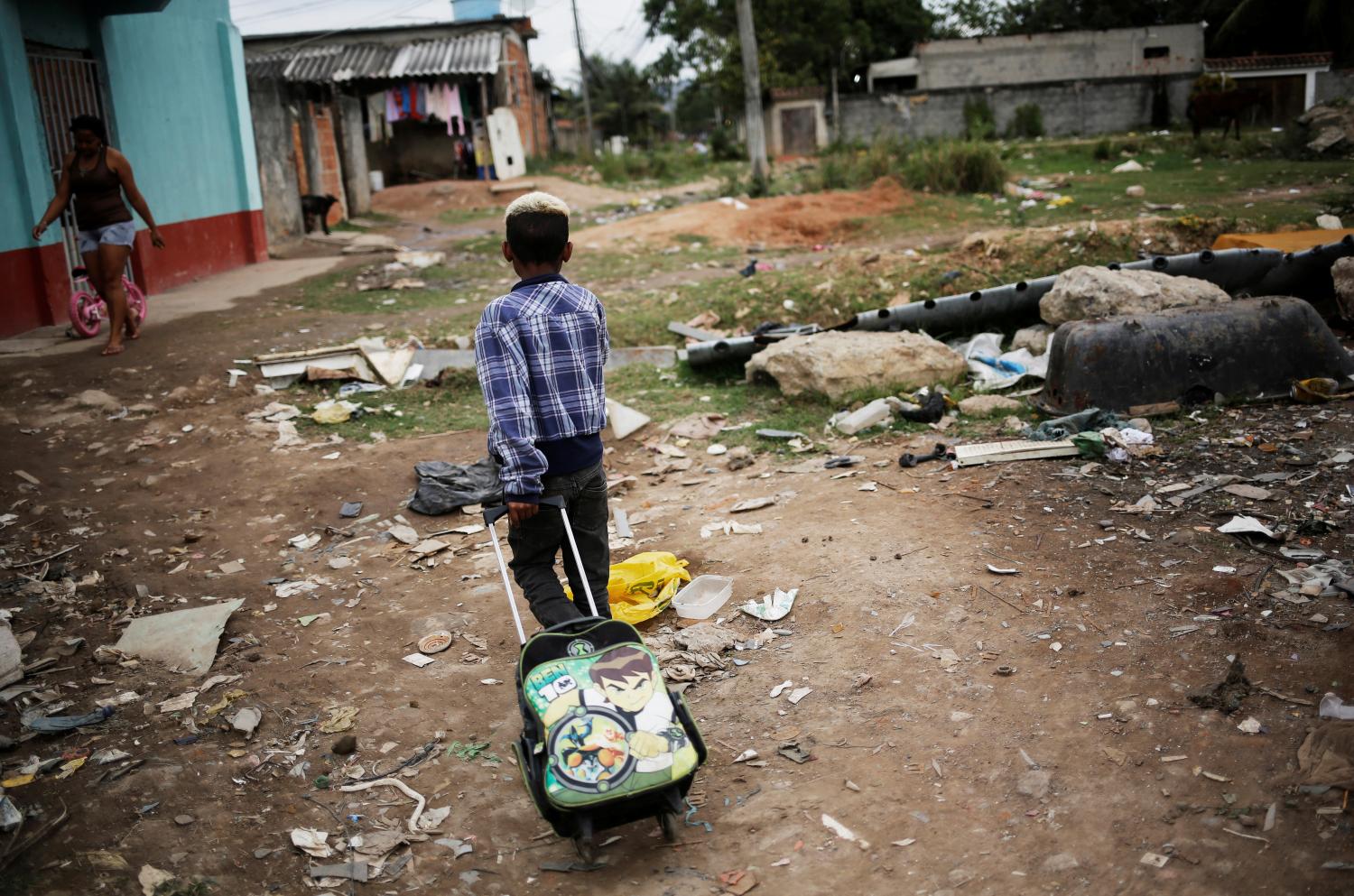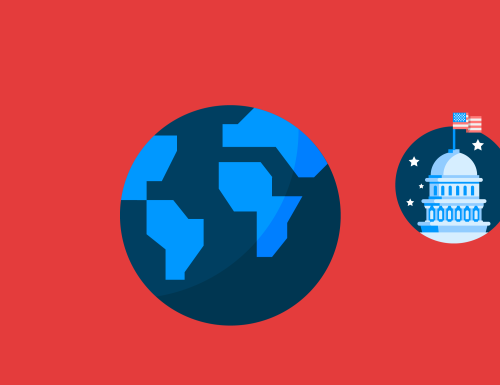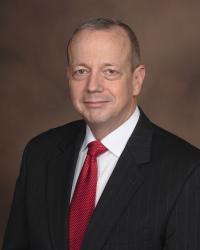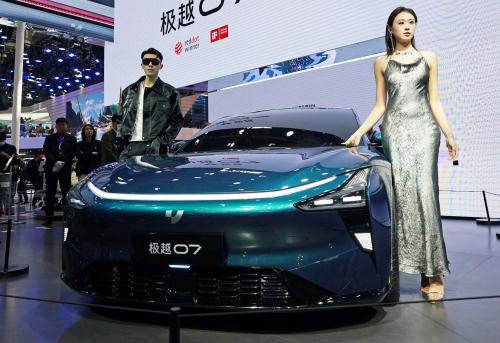The U.S. government is giving short shrift to international development goals and American values, China appears poised to eclipse America’s economic dominance, and the climate crisis is now an existential threat to us all.
Seeking solutions to tackle these trends and threats, I joined leaders from the U.S. development and foreign aid communities earlier this summer at the Brookings Blum Roundtable, or BBR. This year our focus was on “2020 and Beyond: Maintaining the bipartisan narrative on U.S. global development.”
In attendance were heads of large humanitarian civil society organizations, aid innovators, and advocates for continued U.S. engagement in the world. It was a timely conversation. Just weeks after our roundtable, some of the participants helped stave off a move by the Trump administration to rescind up to $4 billion from the international affairs budget, working with bipartisan leadership on Capitol Hill to avoid the severe cuts.
While we can celebrate that we dodged the “budget axe” once again, the current U.S. administration will almost assuredly continue to favor transactional deals and brinksmanship over preserving America’s role as a transformational leader in foreign assistance. This dynamic was on full display during the G-7 summit in Biarritz as the President rattled leaders with bullying tweets, only to whipsaw again and signal that the door remains open for a U.S.-China trade deal.
Yet this too shall pass. As we heard repeatedly at the roundtable, America can still change course and reassert its leadership in humanitarian aid and development. It is important not just for global stability and prosperity—it serves American interests and promotes our values, as well.
To get there, we need a new narrative.
Global goals at risk in an era of disruption
With U.S. leadership adrift and progress on the Sustainable Development Goals (SDGs) halting at best, what can motivate the community of nations to redouble their efforts to realize a better world?
In the aid arena, “permissionless players”—new actors working outside established hierarchies of government agencies and multilateral institutions—are emerging and bucking the norms of traditional development cooperation. As a result, aid delivery is being reshaped thanks to citizen-driven social movements, multinational companies motivated to be socially responsible, and powerful foundations backing experimental approaches. Development efforts are also being made more efficient and effective through the deployment of modern technologies such as satellite mapping, crowd sourcing, artificial intelligence, digital ID systems, direct cash transfers to poor people, and other results-driven solutions.
These new entrants can be a force for good as the world grapples with a climate crisis, demographic change, a surge in refugees fleeing failed states, and rapid urbanization.
The climate crisis, which is hitting developing countries hard, was a central topic at our roundtable, since its effects are already transforming development prospects and confounding those who track long-term environmental and social trends. Unpredictable and increasingly extreme weather events are upending the agriculture sector, exacerbating the plight of vulnerable people—particularly women—and precipitating migration. In addition, we could expect tens of millions of climate migrants between 2050 and 2070—many of whom will have no choice but to resettle in already overpopulated cities, or in regions with little capacity to weather the rapid influx of individuals and families in need. Thus, climate-based migration may soon create one of the greatest sources of insecurity and conflict in the latter part of the 21st century.
Developing countries also face a youth bulge; unless we equip youth for the workforce of the future, unemployment will skyrocket and an entire generation will lack purpose and hope for the future, making them particularly vulnerable to radicalization strategies of extremist movements. Each year, 121 million adolescents enter the workforce. Based on this estimate, between 2012 and 2020, almost 1.1 billion young job seekers are expected to enter the job market, most of them in South Asia and sub-Saharan Africa. These individuals need both soft skills and competency in science, technology, engineering, and math if they are to be successful in the economy of tomorrow. It doesn’t take much to imagine the impact of millions of young, unemployed climate migrants or refugees, many of them devoid of hope and susceptible to dogmas of religious, ethnic, and racial hatred.
In all these areas, the development community has a critical, indeed vital, role to play—its success will almost assuredly require novel methods and a new narrative on the importance of foreign aid.
On China, the US, and other donors
Today, China oversees major financial assets and development via the Belt and Road Initiative (BRI), its ambitious strategy to broaden and deepen its economic relationships and build and fund infrastructure worldwide. The Chinese focus on infrastructure lending presents an alternative to grant aid offered by the U.S. and like-minded donors who traditionally promoted human rights and democratic governance.
Rather than focus on the stark differences between how the two nations approach aid, policymakers would do well to find areas around which they can cooperate—for example, on pollution reduction, anti-poverty programs in South Asia, or the prevention of health pandemics. All of this, of course without abandoning the American commitment to human rights and the rule of law.
USAID has sharpened its mission, seeking to help set developing countries on a “Journey to Self-Reliance,” with a focus on private sector engagement, fostering better business climates, and supporting country systems so that aid programs are locally grown and supported globally. Less encouraging is the fact that many in the U.S. government resist uptake of the SDGs as an organizing force for advancing human progress. While still large, the scale of U.S. assistance does not approach the trillion-dollar level of loans that the Chinese have suggested for the BRI.
Any serious attempt to offer an alternative to China’s ambitious development investments will require collective action and working more intensively with traditional donors such as the Europeans and the Japanese. Today’s aid model must also evolve to incorporate the rise of other middle-income countries as donors and leaders in the development space.
Get beyond business as usual, act locally
Shoring up policymaker support for official aid, whether by working through Congress or in dialogue with policy experts in USAID, the Pentagon, and the State Department, is useful but insufficient in making the case for aid.
To preserve a robust U.S. role in the world, we must understand what the American people care about, engage with them where they are, and find new and novel ways to channel grassroots enthusiasm at the local and state levels so that it has an international impact.
Creating and supporting relationships between U.S. communities and their global counterparts, ones that are meaningful for businesses, universities, and innovators, is one way to advance diplomatic and development priorities. This is already happening. The city of Pittsburgh just signed a partnership agreement with Aarhus, Denmark, to work together to transform their old industrial areas into thriving and equitable urban spaces running on clean energy. Another example is Hawaii—a U.S. state that is sharing its experiences in creating innovative partnerships to advance sustainable development with islands such as Palau, a country threatened both by the effects of climate change and direct political pressure from the Chinese government.
Listen to the voters, tap grassroots energy, and innovate
Opinion polls clearly highlight that Americans care deeply about doing good in the world. Significant majorities of those polled support U.S. global leadership and believe we should be working together with allies to solve the world’s toughest problems. They are supportive of specific programs, such as keeping Ebola at bay, helping refugees in need, or supporting women’s health and empowerment as a means of promoting peace and lower fertility rates.
Put simply, American values are alive and well, despite increasing U.S. government disengagement on these issues.
In summary, American grassroots support and leadership persists; we simply need to celebrate it. It comes from mayors and governors, new philanthropists, tech disrupters, and social entrepreneurs who are transforming the aid industry. We need to highlight these stories and insert them into the discourse and narrative of the 2020 election.
Today’s development challenges reach our shores in many ways; tackling them requires the sort of U.S. leadership that projects American values and works in concert with our longstanding allies.
Tune in America—there is something in this for all of us.
The Brookings Institution is committed to quality, independence, and impact.
We are supported by a diverse array of funders. In line with our values and policies, each Brookings publication represents the sole views of its author(s).







Commentary
US foreign aid is worth defending now more than ever
September 4, 2019